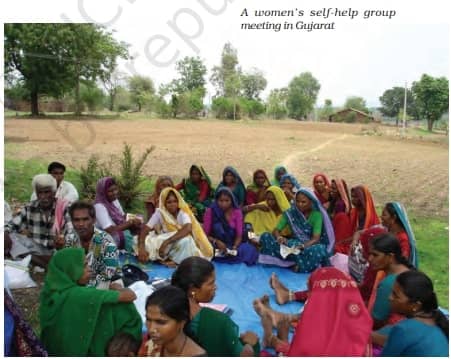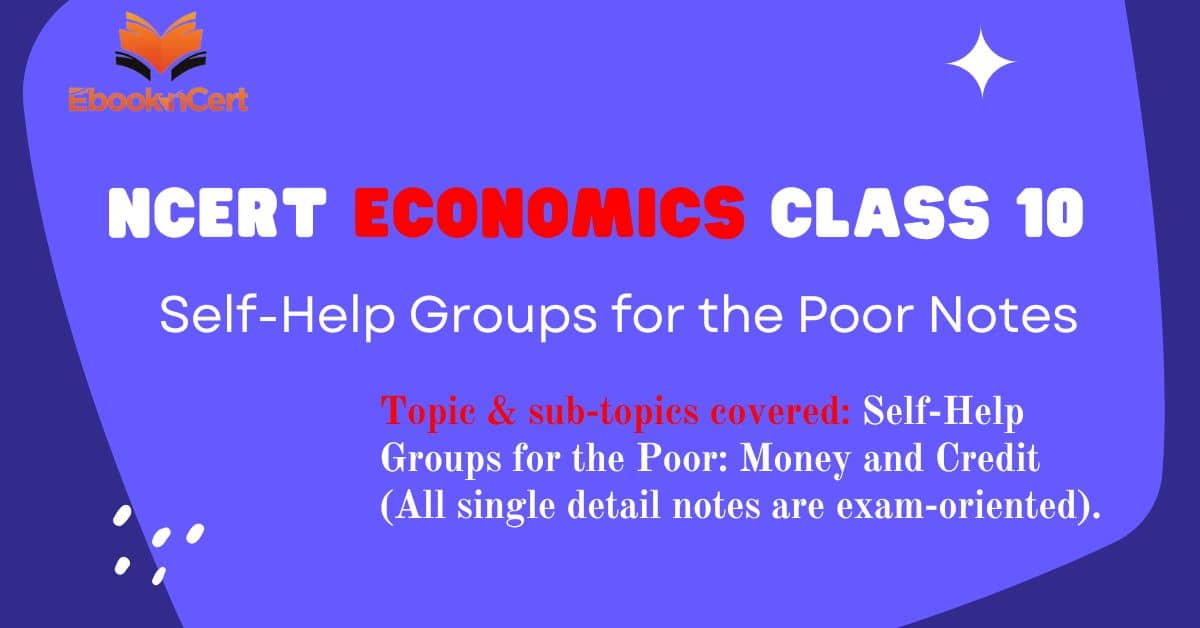NCERT Economics Class 10 | Self-Help Groups for the Poor Notes
Topic & sub-topics covered: Self-Help Groups for the Poor: Money and Credit (All single detail notes are exam-oriented).
We have discussed in-depth and exam-oriented pointers that can be asked in the board exam of class 10th about “Self-Help Groups for the Poor” which is taken from the NCERT Economics notes for class 10th chapter 3 “Money and Credit“.
Download the NCERT Economics for Class 10th Chapter 3 Money and Credit Notes PDF
Looking to grasp the concepts of money and credit in NCERT Economics for Class 10th? Look no further! Download the comprehensive Chapter 3 Money and Credit Notes PDF now and unlock a treasure trove of knowledge.
NCERT Class 10 Economics Chapter 3 Money and Credit Class 10th PDF Notes
Delve into the intricacies of monetary systems, explore the role of credit in the economy, and understand the mechanisms of banking and financial institutions. Our meticulously prepared notes provide concise explanations, illustrative examples, and insightful analysis to deepen your understanding of this crucial subject. With a clear focus on exam preparation and academic excellence, our PDF notes offer a structured approach to learning, helping you grasp complex concepts with ease.
Gain confidence in your knowledge and ace your exams with the help of our top-quality study material. Don’t miss out on this opportunity to elevate your learning experience – download the NCERT Economics for Class 10th Chapter 3 Money and Credit Notes PDF today!
Self-Help Groups for the Poor

1. Dependency on Informal Credit:
- Poor households often rely on informal sources of credit due to limited access to formal banking facilities in rural areas.
- Obtaining loans from banks is challenging for the poor as it requires proper documentation and collateral, which they often lack.
2. Challenges with Bank Loans:
- Banks demand collateral and proper documentation for loan approval, making it difficult for the poor to meet these requirements.
- Lack of collateral acts as a major barrier for poor individuals seeking loans from banks.
3. Role of Moneylenders:
- Moneylenders provide loans to the poor without collateral, leveraging personal relationships and flexibility in repayment terms.
- However, moneylenders impose exorbitant interest rates, maintain no transaction records, and often harass borrowers.
4. Introduction of Self-Help Groups (SHGs):
- SHGs are formed to organize the rural poor, especially women, and pool their savings to provide loans within the group.
- Typically comprising 15-20 members, SHGs enable members to access small loans at lower interest rates compared to moneylenders.
5. Functions of SHGs:
- SHGs decide on loan disbursement, amount, purpose, interest rates, and repayment schedules democratically.
- Members collectively bear the responsibility for loan repayment, fostering a sense of accountability and solidarity within the group.
6. Benefits of SHGs:
- SHGs address the collateral problem by allowing members to access loans based on group savings and repayment track records.
- Timely access to affordable loans enables SHG members to invest in income-generating activities and acquire assets, leading to financial empowerment and poverty alleviation.
7. Social Impact of SHGs:
- SHGs serve as platforms for discussing and addressing social issues such as health, nutrition, and domestic violence, promoting community development and women’s empowerment.

